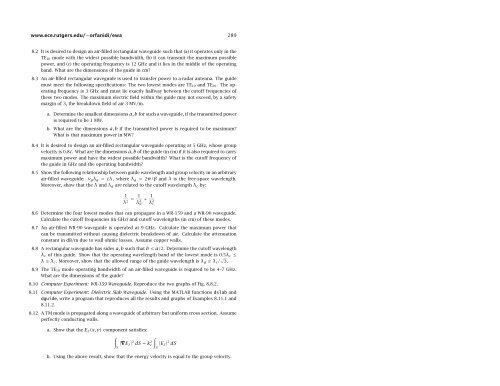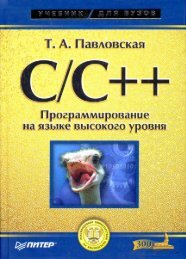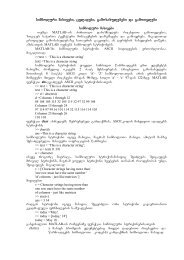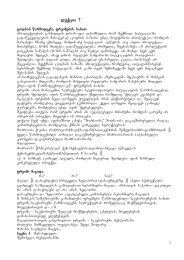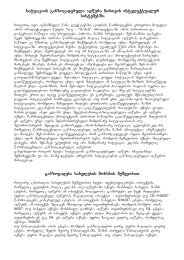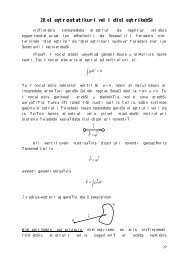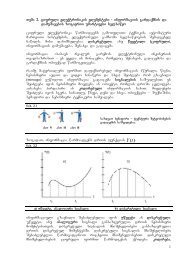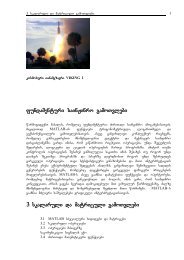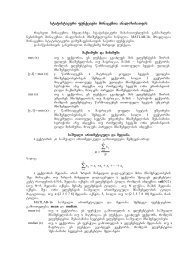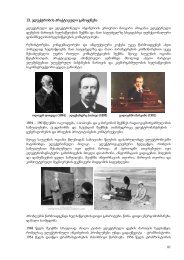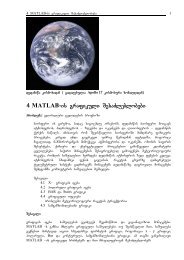Waveguides - ieeetsu
Waveguides - ieeetsu
Waveguides - ieeetsu
You also want an ePaper? Increase the reach of your titles
YUMPU automatically turns print PDFs into web optimized ePapers that Google loves.
www.ece.rutgers.edu/∼orfanidi/ewa 289<br />
8.2 It is desired to design an air-filled rectangular waveguide such that (a) it operates only in the<br />
TE 10 mode with the widest possible bandwidth, (b) it can transmit the maximum possible<br />
power, and (c) the operating frequency is 12 GHz and it lies in the middle of the operating<br />
band. What are the dimensions of the guide in cm?<br />
8.3 An air-filled rectangular waveguide is used to transfer power to a radar antenna. The guide<br />
must meet the following specifications: The two lowest modes are TE 10 and TE 20 . The operating<br />
frequency is 3 GHz and must lie exactly halfway between the cutoff frequencies of<br />
these two modes. The maximum electric field within the guide may not exceed, by a safety<br />
margin of 3, the breakdown field of air 3 MV/m.<br />
a. Determine the smallest dimensions a, b for such a waveguide, if the transmitted power<br />
is required to be 1 MW.<br />
b. What are the dimensions a, b if the transmitted power is required to be maximum?<br />
What is that maximum power in MW?<br />
8.4 It is desired to design an air-filled rectangular waveguide operating at 5 GHz, whose group<br />
velocity is 0.8c. What are the dimensions a, b of the guide (in cm) if it is also required to carry<br />
maximum power and have the widest possible bandwidth? What is the cutoff frequency of<br />
the guide in GHz and the operating bandwidth?<br />
8.5 Show the following relationship between guide wavelength and group velocity in an arbitrary<br />
air-filled waveguide: v g λ g = cλ , where λ g = 2π/β and λ is the free-space wavelength.<br />
Moreover, show that the λ and λ g are related to the cutoff wavelength λ c by:<br />
1<br />
λ = 1 2 λ 2 + 1<br />
g λ 2 c<br />
8.6 Determine the four lowest modes that can propagate in a WR-159 and a WR-90 waveguide.<br />
Calculate the cutoff frequencies (in GHz) and cutoff wavelengths (in cm) of these modes.<br />
8.7 An air-filled WR-90 waveguide is operated at 9 GHz. Calculate the maximum power that<br />
can be transmitted without causing dielectric breakdown of air. Calculate the attenuation<br />
constant in dB/m due to wall ohmic losses. Assume copper walls.<br />
8.8 A rectangular waveguide has sides a, b such that b ≤ a/2. Determine the cutoff wavelength<br />
λ c of this guide. Show that the operating wavelength band of the lowest mode is 0.5λ c ≤<br />
λ ≤ λ c . Moreover, show that the allowed range of the guide wavelength is λ g ≥ λ c / √ 3.<br />
8.9 The TE 10 mode operating bandwidth of an air-filled waveguide is required to be 4–7 GHz.<br />
What are the dimensions of the guide?<br />
8.10 Computer Experiment: WR-159 Waveguide. Reproduce the two graphs of Fig. 8.8.2.<br />
8.11 Computer Experiment: Dielectric Slab Waveguide. Using the MATLAB functions dslab and<br />
dguide, write a program that reproduces all the results and graphs of Examples 8.11.1 and<br />
8.11.2.<br />
8.12 A TM mode is propagated along a waveguide of arbitrary but uniform cross section. Assume<br />
perfectly conducting walls.<br />
a. Show that the E z (x, y) component satisfies:<br />
∫<br />
∫<br />
|∇E z | 2 dS = k 2 c |E z | 2 dS<br />
S<br />
S<br />
b. Using the above result, show that the energy velocity is equal to the group velocity.


